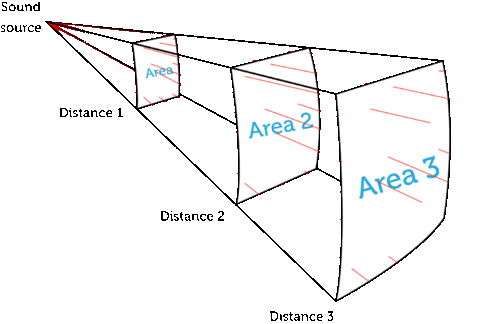0 item(s)
$0.00
Your cart is currently empty.

Sound Part Two:
This second part of the acoustical technical notes will allow us to expand your knowledge about sound. Part two discusses levels, decibels, and intensity of sound.
Every day, we experience sounds in our environment, such as the sounds from television and radio, household appliances, and traffic. Normally these sounds are at safe levels that don’t damage our hearing, but sounds can be harmful when they are too loud.
Decibels:
The effects of noise on hearing vary among people. Some people’s ears are more sensitive to loud sounds, especially at certain frequencies. But any sound that is loud enough and lasts long enough can damage hearing and lead to hearing loss.
A sound’s loudness is measured in decibels (dB). Humans can hear sounds between zero and 140. A typical conversation is about 60 dB, a lawn mower is about 90 dB, and a loud rock concert is about 120 dB. In general, sounds above 85 dB are harmful, depending on the timeline of exposure and whether you are wearing hearing protection. The generally accepted standard to minimize hearing risk is 85 dBA according to OSHA standards. Prolonged exposure beyond 8 hrs can risk damage.
Table 1 shows decibel levels of several sounds.
|
Noise levels |
|
| Noise | Average decibels (dB) |
| Leaves rustling, soft music, whisper |
30 |
| Average home noise |
40 |
| Normal conversation, background music |
60 |
| Office noise, inside car at 60 mph |
70 |
| Vacuum cleaner, average radio |
75 |
| Heavy traffic, window air conditioner, noisy restaurant, power lawn mower |
80-89 (sounds above 85 dB are harmful) |
| Subway, shouted conversation |
90-95 |
| Boombox, ATV, motorcycle |
96-100 |
| School dance |
101-105 |
| Chainsaw, leaf blower, snowmobile |
106-115 |
| Sports crowd, rock concert, loud symphony |
120-129 |
| Stock car races |
130 |
| Gunshot, siren at 100 feet |
140 |
Sound Pressure Levels:
Because your ears are sensitive to a very wide range of sound pressures, it makes sense to use a logarithmic scale to measure the loudness of a sound. Sound pressure level uses a logarithmic scale to represent the sound pressure of a sound relative to a reference pressure. The sound pressure level is measured in units of decibels (dB).
Sound Power Level:
Sound power and sound pressure are two distinct and commonly confused characteristics of sound. However, sound power level, often denoted SWL or LW, is the metric traditionally used for source characterization. Sound power is the total amount of acoustic energy emitted by a source per unit time. This means it is independent of distance from the source. Sound power is measured in standard units of Watts.
Sound Intensity:
Sound intensity also known as acoustics intensity is defined as the power carried by sound waves per unit area. Intensity results from two factors: the amplitude of the sound and how far they have traveled from the source of the sound. Sound intensity is objective and can be measured by auditory equipment independent of an observer’s hearing.
You can see how this works in the Figure below. As the distance from the sound source increases, the area covered by the sound waves increases. The same amount of energy is spread over a greater area, so the intensity and loudness of the sound are less. This explains why even loud sounds fade away as you move farther from the source.

Now that we have walked you through some of the basic concepts of acoustics, hopefully, you have a better understanding of what sound is and how sensitive ears can be to sound, varying on the range of sound pressures, power, and intensity. For more information on some of the products available to help absorb or block sound visit our website.